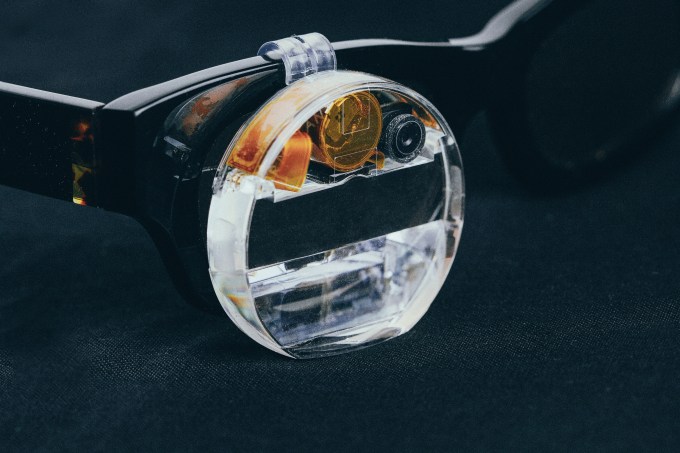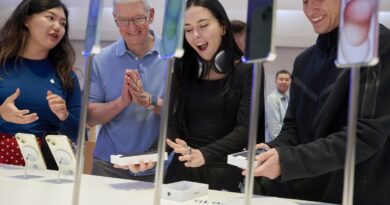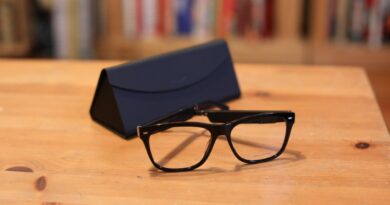Brilliant Labs puts AI in front of your eye with its tiny open source AR lens
Brilliant Labs’ augmented reality wearable stands in stark contrast to Apple’s pricey, bulky, stealthy Vision Pro. The startup’s inaugural product, Monocle, is an open source, pocket-sized AR lens that can be clipped on any eyewear or held to the eye. Launched in March, Monocle has a much more accessible price tag of $349.
“Other AR and VR headsets tend to keep you around your couch at home. We are running in the exact opposite direction,” said Bobak Tavangar, CEO and co-founder of Brilliant Labs, in an interview with TechCrunch.
To integrate its AR device into people’s daily life, Singapore-based Brilliant Labs aims to embed generative AI into its compact wearable. It’s raised some money to pursue this vision. Today, the startup announced its $3 million seed funding led by Brendan Iribe, co-founder of Oculus; Adam Cheyer, co-founder of Siri; Eric Migicovsky, founder of Pebble and former partner at Y Combinator; and Plug & Play Ventures, among others.
An open approach
Monocle’s open source community has already gained a dedicated following. In March, it went viral thanks to a group of Stanford students who transformed the eyepiece into a display for GPT-4. With the ability to listen to a user’s conversation through their phone’s microphone in real time, Monocle can generate personalized support, such as offering suggestions for what to say on a date.
The computing process happens on OpenAI’s server. The responses are then transmitted through Bluetooth from the user’s phone to Monocle and projected to the lens in front of the user’s eye.
Brilliant Labs has also developed a similar application in-house. The arGPT solution, as it’s called, is able to receive sound natively through Monocle’s mic and other sensors, enabling low-latency dialogue with GPT-4.
So far, Monocle has mostly attracted developers, hackers, hobbyists and researchers experimenting with the little palm-sized device, an approach that the founder believes can unleash the potential of fusing generative AI and AR.
“There is something important about allowing people to dig into [the AR device’s] heart and understand it and play with it and share that with others, not just passively receive something that’s the closed blocks that a few people far away have designed for the rest of us,” he said. “We think there’s something really philosophically important there.”
The challenge, of course, is how it branches out of the initial geeky customer base and comes up with a product that appeals to the broader consumer market.
A lightweight strategy
Monocle comes with five processors, including a hackable field-programmable gate array (FPGA) accelerator chip that handles the data coming in from the device’s camera, microphone and capacitive touch sensor. The use of low-power electronics and miniaturized electronic parts, according to the founder, allows the lens to be compact and weigh only 15 grams.
“Every other device company was doing bulky, expensive headsets. They weren’t making money out of them,” said Tavangar. “This age of AI is upon us, and from day one — even before GPT — we saw a market opportunity with computer vision.”
At this stage, a smartphone is needed to act as a point of relay between Monocle and cloud-based AI apps. In the long term, however, the goal is to create a direct connection between the hardware and the cloud, doing away with the need for a phone host.
Eventually, the company’s vision is to run deep learning models directly on its tiny AR devices, which means even lower latency and functionality even if an internet connection is lost.
Brilliant Labs’ emphasis on a lightweight design extends to its management style. Despite being established in 2019, the startup is still run solely by its three co-founders, which makes one wonder why other mixed reality device makers need hundreds if not thousands of staff. There are signs of overhiring. In February 2021, as many as 200 people were affected during a layoff at Pico, a VR company acquired by ByteDance.
Tavangar attributes his management style to his time at Apple, where he worked as a program lead. He believes that focus is key, and that success comes from choosing one idea to pursue out of hundreds of potential options.
“How do you do really lightweight, affordable, focused hardware to deliver that AI-powered experience? [We are not chasing] the graphical intensity or big field of view [but rather] the singular AI in front of the eye experience,” the founder suggested.
“That means you don’t need an army of people who are battling with Qualcomm and all of these various different vendors and engaging in really risky, low-yield R&D and production, and still selling your end device at a loss. It means that we work with technology that has high yield and factory-floor partners that are eager to work with us, in some cases, have invested in us, like our key optics manufacturer and contract manufacturer.”
Path to profitability
While Tavangar declined to disclose Monocle’s sales figures, he said Brilliant Labs makes “a fair bit of money per unit” and “the margins are really good.” The company does “quite well” just from hardware sales without any marketing efforts, he added.

The Monocle AR lens weighs only 15 grams. Image Credits: Brilliant Labs
“This is again something I learned from Apple. If you can get the unit economics right and if your yields are 80, 90% and above at low volume, then you’ve got the operational discipline, the good foundation, and are able to start scaling and be a profitable company,” the founder said.
Case in point, the startup is currently seeing “almost 3x in terms of what we’re able to sell it for versus what it costs us to make it.” In comparison, many other mixed reality companies are selling at zero or negative margins, Tavangar said.
Aside from selling hardware, Brilliant Labs plans to layer on more services powered by large language models, which presents an opportunity to charge for the services. Brilliant Labs integrated with GPT first because it has a “well-documented API.” But the large language model is compute-intensive and the team is constantly on the lookout for more compressed LLMs.
“I think over time we will see how compressed the models can become even as efficiency increases. As an undercurrent to that, the hardware we make will be more powerful even as the hardware stays low power,” the founder said.
The company is on track to “far exceed” its sales target this year. It has close to 2,000 developers in its Discord community to date.
When questioned about Brilliant Labs’ competitive edge, Tavangar reckoned that the startup’s tightly integrated software and hardware ecosystem is hard to copy, not least because it has a fledgling open source community.
The company also enjoys a data advantage, he said, as the user information collected by the sensors continues to inform the AI services running on the platform, which in turn improves user personalization. Brilliant Labs does not store any customer data on its devices or server, as it’s “not interested in selling data to advertisers,” the founder noted.
Brilliant Labs puts AI in front of your eye with its tiny open source AR lens by Rita Liao originally published on TechCrunch






